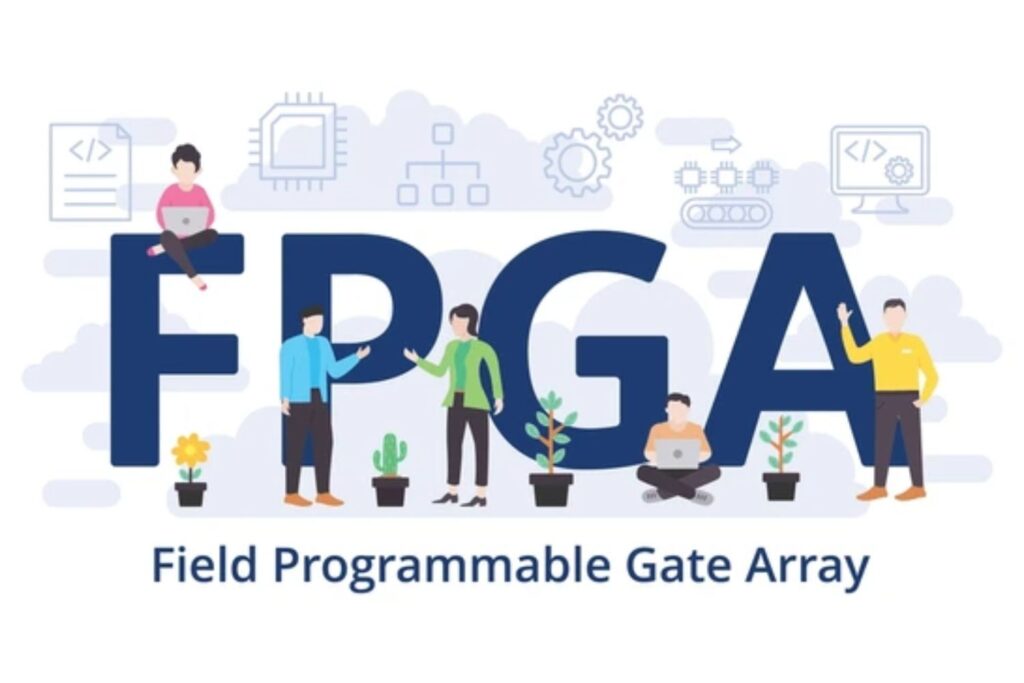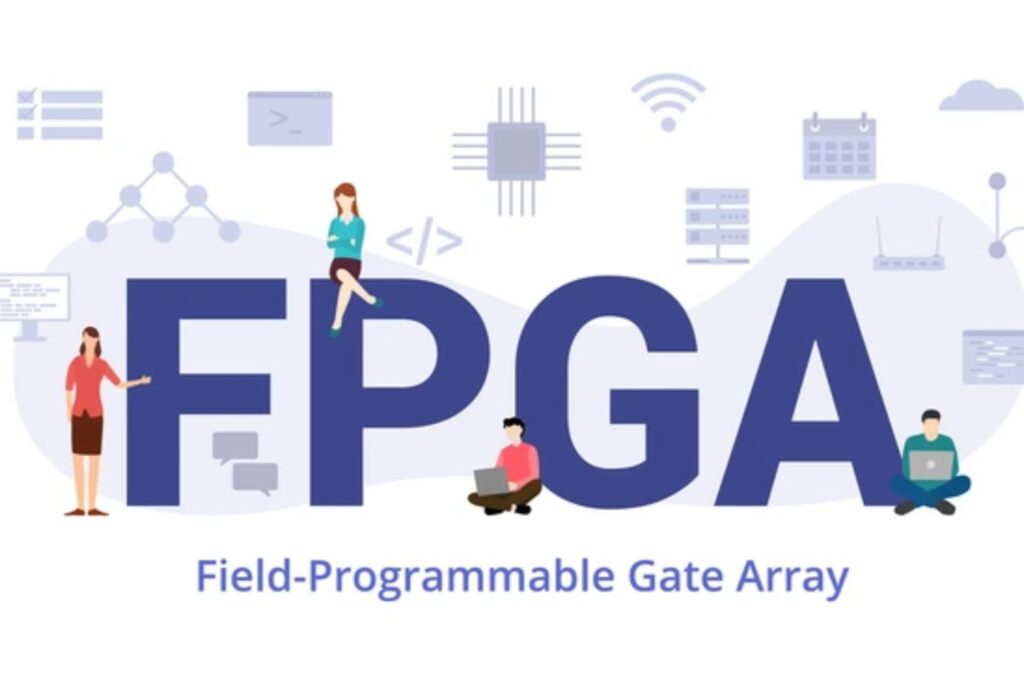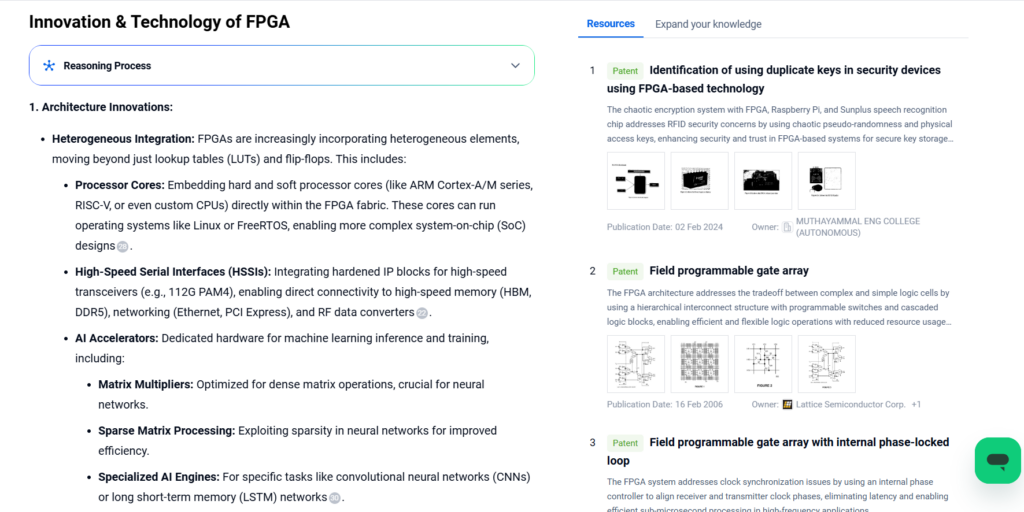
In an era where technological demands vary widely across industries, the need for adaptable and efficient computing solutions has never been greater. Traditional processors, while powerful, often struggle to meet the unique requirements of specialized tasks, such as real-time data processing in autonomous vehicles, high-speed signal analysis in telecommunications, or secure encryption in financial transactions. Enter Field-Programmable Gate Arrays (FPGAs), a revolutionary class of integrated circuits that bridge the gap between off-the-shelf hardware and custom-designed solutions. Unlike fixed-function processors, FPGAs offer unparalleled flexibility, allowing users to configure their hardware logic post-manufacturing to fit specific application needs. This adaptability, combined with their ability to deliver high performance, low latency, and energy efficiency, makes FPGAs an ideal choice for a diverse range of custom applications.
In this article, “FPGAs: Flexible Computing for Custom Applications,” we will explore the core features, technical advantages, and real-world use cases of FPGAs, uncovering how these versatile devices are reshaping the landscape of modern computing through PatSnap Eureka AI Agent.
What is an FPGA?
A Field-Programmable Gate Array (FPGA) is a semiconductor device composed of logic blocks and interconnects that can be configured after manufacturing. Engineers use hardware description languages (HDLs) like VHDL or Verilog to program the desired logic.
Key Characteristics of FPGAs
- Reconfigurable Logic: Users can change the functionality of the chip at any time.
- Parallel Processing: FPGAs execute multiple operations simultaneously, boosting throughput.
- Deterministic Timing: Operations occur in fixed time slots, which is crucial for real-time systems.
- Low Latency: With no OS overhead, FPGAs achieve extremely low response times.
- Custom Interfaces: Developers can build application-specific communication protocols directly into the chip.

Real-World Applications & Use Scenarios
- Telecommunications: FPGAs enable low-latency data processing in 5G base stations.
- Aerospace and Defense: They are used in radar systems and signal intelligence due to their reliability.
- Automotive: Used in ADAS (Advanced Driver-Assistance Systems) for real-time data fusion.
- Finance: FPGA-based solutions reduce trading latency in high-frequency trading systems.
- Healthcare: Custom signal processing in medical imaging devices such as MRIs and ultrasounds.
Innovation & Technology
Through using PatSnap Eureka AI Agent ,we find that recent innovations in FPGA technology include:
1. Architecture Innovations
Heterogeneous Integration:
Modern FPGAs are no longer limited to just lookup tables (LUTs) and flip-flops. Designers now integrate a diverse range of components. This shift enables new capabilities and broadens use cases.
- Processor Cores:
Engineers embed both hard and soft processor cores, such as ARM Cortex-A/M, RISC-V, or custom CPUs, directly into FPGA fabric. These cores can run full operating systems like Linux or FreeRTOS. As a result, developers can build more advanced system-on-chip (SoC) designs. - High-Speed Serial Interfaces (HSSIs):
FPGAs now feature hardened IP blocks for high-speed transceivers (e.g., 112G PAM4). These blocks support direct connections to memory systems like HBM and DDR5, as well as interfaces like Ethernet, PCIe, and RF data converters. - AI Accelerators:
Designers add dedicated hardware to accelerate machine learning tasks. These include:- Matrix Multipliers: Optimized to handle dense matrix operations in neural networks.
- Sparse Matrix Processing: Takes advantage of sparsity to boost efficiency.
- Specialized AI Engines: Designed for specific models such as CNNs or LSTMs.
- Digital Signal Processing (DSP) Blocks:
FPGAs integrate hardened MAC blocks that support both single- and half-precision floating-point operations. This greatly improves computational efficiency. - Memory:
Embedded memory blocks (BRAM) now support flexible configurations—simple dual-port, true dual-port, and FIFO. FPGAs also offer interfaces to external memory. - Clock Management:
Modern FPGAs include advanced clock control tiles, such as:- PLLs (Phase-Locked Loops): Used for clock generation and frequency synthesis.
- DLLs (Delay-Locked Loops): Provide clock deskewing.
- Clock Buffers: Distribute low-skew clocks across the device.
- Interconnect:
To handle increasing bandwidth and architectural complexity, FPGA interconnects have evolved:- Network-on-Chip (NoC): Supports efficient communication between integrated components with low latency and high bandwidth.
- Priority-Based Routing: Gives critical data paths higher priority, enhancing system performance.
- Configuration Memory:
Even the configuration memory is improving:- Non-Volatile Memory: Flash and MRAM provide instant-on features and improved security.
- Partial Reconfiguration: Allows reprogramming specific regions of the FPGA while the rest remains active. This enables real-time updates and resource reuse.
2. Application Innovations
Artificial Intelligence and Machine Learning
FPGAs are becoming popular choices for AI/ML applications—from edge devices to cloud servers.
- Inference:
They accelerate inference for models such as CNNs, LSTMs, and Transformers. - Training:
Although less common due to high resource demands, FPGAs can also accelerate model training. - Custom AI Engines:
Developers design application-specific AI engines for better performance and energy efficiency compared to general-purpose CPUs or GPUs.
High-Performance Computing (HPC)
FPGAs play a growing role in boosting performance across various HPC domains.
- Scientific Computing:
They accelerate simulations and models in physics, chemistry, and biology. - Financial Computing:
Used in high-frequency trading, risk analysis, and financial simulations. - Data Analytics:
FPGAs help process and analyze big data faster.
Networking:
Engineers build flexible, high-speed networking solutions using FPGAs.
- Routers and Switches:
Custom logic enables precise control over network routing and switching. - Network Function Virtualization (NFV):
FPGAs accelerate software-defined network functions. - Software-Defined Networking (SDN):
They support reconfigurable and programmable networking platforms.
Image and Signal Processing:
FPGAs excel in handling real-time image and signal workflows.
- Medical Imaging:
They accelerate image reconstruction in MRI, CT, and ultrasound systems. - Radar and Sonar:
FPGAs implement signal processing for detection and tracking. - Computer Vision:
They speed up object detection, recognition, and classification.
Automotive:
In modern vehicles, especially those with ADAS and autonomous systems, FPGAs are essential.
- Sensor Fusion:
They combine data from cameras, radar, and lidar for environmental awareness. - Perception:
FPGAs run algorithms that detect and classify objects in real time. - Control:
They manage vehicle operations like steering, acceleration, and braking.
Industrial Automation:
FPGAs support intelligent, responsive automation systems.
- Motor Control:
They enable precise and efficient motor operations. - Robotics:
FPGAs handle robot control, perception, and interaction logic. - Process Control:
They implement real-time logic for managing industrial systems.
3. Security Innovations
FPGAs are adopting more advanced security features to protect against threats and ensure system integrity.
- Secure Boot:
FPGAs now verify configuration data before startup, ensuring only trusted code runs. - Encryption:
They encrypt both configuration and internal data to prevent unauthorized access. - Authentication:
FPGAs authenticate both the hardware and configuration files to prevent tampering. - Intrusion Detection:
FPGAs monitor for suspicious activity and respond to potential attacks. - Physical Unclonable Functions (PUFs):
Each FPGA now includes a unique, unclonable identity using PUFs, strengthening hardware-level security.
4. Market Trends
Increasing Demand:
More industries are turning to FPGAs to meet demands for flexible, high-speed computing solutions.
Market Growth:
The FPGA market is expanding rapidly, with an expected CAGR of 10–11% in the coming years.
Key Players:
Leading companies such as Xilinx (now AMD), Intel, and Lattice dominate the market.
Emerging Applications:
FPGAs are powering breakthroughs in AI, autonomous vehicles, and 5G infrastructure—fueling innovation and market growth.

FPGA vs ASIC: Feature by Feature Comparison
Flexibility and Reusability
FPGA:
The main advantage of an FPGA lies in its flexibility. You can reprogram it, which means you can use the same chip for various tasks—signal processing, image processing, or data acquisition. You can reconfigure it anytime to perform different functions. Because of this, FPGAs are ideal for prototyping and experimenting. They also work well in low- to medium-volume applications. Since there’s no need to generate costly masks, FPGAs save cost in small-scale production. Their reprogrammable nature allows engineers to reuse them across different designs—without incurring extra expenses.
ASIC:
ASICs, in contrast, are not flexible. Once manufactured, their functionality becomes fixed. They can only perform the specific tasks they were designed for. ASICs come with high up-front costs and require high-volume production to justify those costs.
Performance
FPGA:
FPGAs typically offer lower performance and consume more power compared to ASICs. Designs implemented with FPGAs often perform worse than ASIC-based equivalents. Reports show that, in general, FPGAs require about 21 times more area, introduce about 4 times more delay, and consume roughly 12 times more power. FPGAs are also known for being power-hungry, and their performance can be 10–20 times lower than that of ASICs.
ASIC:
ASICs outperform FPGAs in both performance and efficiency. Since they’re optimized for a specific function, they achieve better speed and use less power. Some applications implemented with ASICs are up to a million times more power-efficient than when coded on a CPU. Moreover, ASICs can handle larger designs because they use die area more effectively.
Cost
FPGA:
FPGAs have higher unit costs than ASICs. In fact, they can cost 10 to 100 times more. However, in low- or medium-volume production, they become more cost-effective. Why? Because they don’t need expensive mask sets or complex fabrication. FPGAs are prefabricated silicon chips. You can program them electrically into nearly any digital circuit. They configure within seconds and can be reprogrammed instantly if a mistake occurs.
ASIC:
ASICs demand a large upfront investment. Design, verification, and fabrication all contribute to this cost. Creating ASICs also requires non-recurring expenses (NRE), such as custom mask sets and detailed physical layout work. But in high-volume production, ASICs lower the cost per unit, making them more economical over time.
Development Time
FPGA:
FPGAs speed up development. Once the design is tested, you can load it into the FPGA and start production immediately—no need to wait for chip fabrication. FPGAs can implement nearly any logic function that an ASIC can. Their short development cycle, reusability, and ability to be updated post-deployment make them attractive for many use cases, despite their higher per-unit cost.
ASIC:
Developing ASICs takes significantly longer. The process involves extensive design work, functional verification, and silicon fabrication. Compared to ASICs, FPGAs offer a much shorter time-to-market.
Power Consumption
FPGA:
FPGAs use more power than ASICs. The programmable routing and interconnects in FPGAs consume significant resources—up to 90% of the area, 80% of the delay, and 85% of the power consumption.
ASIC:
ASICs are more energy-efficient. Their architecture is tailored for specific tasks, which minimizes power consumption.
Application Scenarios
FPGA:
FPGAs are widely adopted in areas like digital signal processing, embedded systems, and rapid prototyping. Recently, they’ve expanded into less traditional applications—such as rugged environments and mission-critical systems. FPGAs power systems in telecommunications, military gear, medical devices, and aerospace. Industries like automotive, data centers, and wireless communication also rely on FPGA-based solutions.
ASIC:
ASICs are favored when the design is stable and performance and efficiency are top priorities. They handle fixed, well-defined tasks and are often used to manage digital signal flow within a system.
Conclusion
FPGAs deliver a unique blend of flexibility, performance, and low-latency computing, making them ideal for fast-changing and real-time environments. Their role is expanding in AI, telecom, automotive, and edge devices. When supported by tools like PatSnap Eureka AI Agent, stakeholders gain actionable intelligence to navigate this fast-evolving technology space.
FAQs
Yes, most FPGAs are reprogrammable and allow updates even after deployment.
It depends. FPGAs offer flexibility, while ASICs provide better performance and efficiency for high-volume applications.
Familiarity with HDLs like VHDL or Verilog, and knowledge of digital logic design.
Absolutely. Modern FPGAs include DSP slices and AI engines to support inference workloads.
Eureka enables IP mapping, trend forecasting, and competitor benchmarking in FPGA innovation.
To get more scientific explanations of FPGA, try PatSnap Eureka AI Agent.




